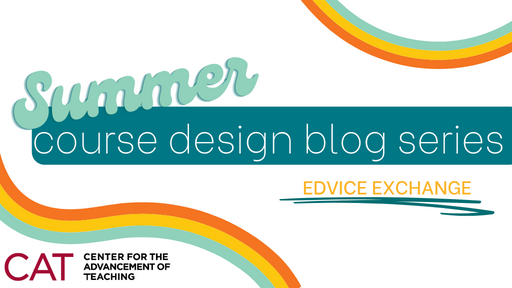H. Naomie Nyanungo

Imagine trying to plan a trip with limited knowledge of your destination. Maybe you know dates of your departure and return and that you will have some travel companions but not much else. You don’t know the weather at your destination, or even how you will get there? You don’t know how many travel companions you will have or anything about them. If you are like me, who likes to feel prepared before embarking on any adventure, this sounds like a nightmare situation. I hope you can see where I am going with this – it is hard to plan for something without considering the context. This is true for planning a trip as it is for designing a course.
The courses we design and teach take place in specific contexts, they do not happen in a vacuum. The situational factors in our context should inform the decisions we make about our learning goals, activities, assessments and feedback strategies. For example, the types of teaching and learning activities that I use in an asynchronous online course will be different from those in an in-person course. A well-designed course is one that takes into consideration relevant contextual factors. When we fail to consider the situational factors in the process of designing courses, we run the risk of setting unrealistic expectations of student performance and alienating our students. It could also result in poor alignment with standards set by departments, programs or accrediting agencies. Ultimately, it leads to frustration for both instructors and students.
Consideration of situational factors is the first step of Dee Fink’s Integrated Course Design Model. The model identifies five categories of contextual factors listed below (with examples of questions for each category):
- Specific context factors: E.g. what classroom will be used for the course, how many students, how often will the class meet, how instruction will be delivered?
- Expectations of others: E.g. what are the expectations placed on this course by the university, department, accreditation agencies, and the students?
- Nature of the subject: E.g. is the subject primarily theoretical, practical, applied, or some combination?
- Characteristics of the students: E.g. what are the characteristics of students who take this class? Are they working professionals? Are they majors in this field?
- Characteristics of the teacher: E.g. what are the factors about your approach to teaching that are relevant to this course? What is your level of knowledge or familiarity with the subject? What is your level of comfort teaching in the specific modality?
It is important to note that not all of these factors are relevant to all teaching situations. You will need to determine which of these are relevant for you. As teachers we usually don’t determine which students will enroll in our class, the classrooms we will teach in, or the expectations of accrediting agencies. The challenge for us is to design good courses knowing the parameters beyond our control in the teaching context.
We encourage you to think about issues of equity and inclusion when assessing the situational factors of your course. In Inclusion by Design: Tool Helps Faculty Examine Their Teaching Practices, Moore and his colleagues share some helpful questions to guide our thinking about equity and inclusion in situational factors.
With some knowledge of the contextual factors in our teaching situation, we can be more confident about the decisions we will make when designing our courses, starting with the next step in this process – Setting Learning Goals.
H. Naomie Nyanungo is Director of Educational Technology at Temple’s Center for the Advancement of Teaching.